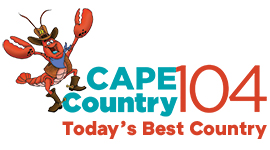Who among us didn’t love playing board games in decades long past? The board games we enjoyed in our childhood, with all their pieces and cards and colors, are not something many kids or families today would think of when considering entertainment choices. Yet, for sentimental reasons, those old, dusty cardboard boxes are still piled up on many a garage or attic shelf, waiting for the day to be rediscovered.
Well, that day has arrived.
Classic board games have been around for over a century and a half, believe it or not. “Life” is the oldest board game, first published in 1860 by Milton Bradley. “Monopoly” dates from 1903, while “Sorry!” was first published by Parker Brothers in 1933. Older games, like chess, go back over 1,500 years.
While staying at home may allow kids and teens (and even adults) an opportunity to spend more time playing Fortnite or other video games, why not introduce them to something old … as something new.
Here’s a list of 10 classic board games that have brought families together for generations, most of which you can still purchase!
The Game of Life – The premise of this game is to go through life making smart decisions and eventually be the player who retires first and with the most money. Each player receives a plastic car to maneuver around a game board that represents the move through multiple stages of life, from picking college to enjoying sweet retirement. It’s a great game for kids to learn about life lessons in an approachable way, and it’s sure to spark some good conversations when you play together as a family.
Clue – Clue is a suspenseful murder mystery game that turns everyone into a detective. There’s been a murder in the Boddy Mansion and it’s up to you to find the culprit. There are only six suspects and you are one of them. Move your game pieces through the rooms and secret passageways of the mansion depicted on the game board to look for clues. The more clues you find, the more you will be able to narrow down the many possible answers to those questions. It’s a race against your fellow players to be the first to put all the pieces of this mystery together.
Candy Land – A childhood favorite. This whimsical board game features landmarks like a candy cane forest and gumdrop mountains. The premise of Candy Land is simple, making this a game that even the youngest family members can enjoy. Players take turns drawing from a stack of cards that tell them where to go on the board. Cards indicate the next move by either a color for the next square to move to or a picture of a landmark. The first player to reach the end of the board wins.
Monopoly – The first official Monopoly game hit the market in 1935, and this game of buying property has been creating real estate titans ever since. Players buy and trade properties and try to not get thrown in jail. If you have the funds, you can buy available properties. You can then make income during the game by charging the other players rent if they land on any of the spaces that you own. In order to win the game you have to bankrupt your opponents, which can take a while. The idea is to buy enough property on the same part of the board that you create a monopoly.
Scrabble – Scrabble is family favorite. Players are given a set number of wooden letter tiles to begin, and each letter is assigned a different point value. You will immediately start analyzing your letter tiles to see what possible word combinations you might be able to create to play the most point-rich words. You’ll want pen and paper nearby to keep track of your scores, and you’ll also probably want a dictionary. It will come in handy when the validity of a word gets challenged. Once one player has used all his or her tiles the game ends and points are tallied, but whoever ends up with the most points is the real winner.
Battleship – Who doesn’t remember the famous line in the commercial? “You sunk my battleship!” In this two-person game of strategy, players secretly arrange their ships on a lettered and numbered 10×10 grid and then try to locate and destroy their opponent’s fleet. There are two grids for each player. One grid is used for placing your own vessels and tracking hits made against you, while the second grid is for marking the hits targeted at your opponent. Take turns firing shots by calling out one of the grid’s plot points. If a hit doesn’t strike a ship, it’s considered a miss and pegged with white pieces. If a hit makes contact with a ship, then that strike gets pegged with red. The number of hits each kind of vessel can sustain before it sinks is varied. After some initial exploratory firing, you will likely start to figure out the location of your opponent’s ships and begin to deal the fatal blows. (If you were lucky, you had electronic Battleship!)
Stratego – In this two-person game of military moves, players arrange all 40 of their game pieces in whatever order they choose. There are 12 different kinds of pieces, and each plays a different role that needs to be considered during setup. There are many layers of strategy involved in a successful setup, making this game as enjoyable for adults as it is for kids. Once all of the pieces have been arranged, game play commences as you make your way into enemy territory in an effort to locate your opponent’s flag. Tread carefully – there are bombs planted to throw you off track and spies doing recon for the enemy. The player to successfully capture the opposing army’s flag wins.
Twister – To play, place the game’s large vinyl mat on the floor. The mat has four rows of different colored dots and a cardboard spinner broken up into quadrants that dictates what body part goes on what color dot. You might find yourself in a downward dog or you might find yourself with someone’s rump in your face, but try to hold your position no matter how strange it might seem. You will definitely be eliminated if you fall, but you also risk elimination if someone catches you resting a knee or elbow on the mat. See who can hold out the longest and become the Twister champion.
Checkers – This Abstract strategy game is an all-time favorite. Players move disc-shaped pieces across an 8-by-8 cross-hatched (“checker”) board. Pieces only move diagonally, and only one space at a time. If a player can move one of his pieces so that it jumps over an adjacent piece belonging to their opponent and into an empty space, that player captures the opponent’s disc. Jumping moves must be taken when possible. A player wins by removing all of his opponent’s pieces from the board or by blocking the opponent so that he has no more moves.
Chess – Ah, the game of kings. And so-called because the actual kings of old enjoyed playing it! In this classic two-player game, you and your opponent have the same 16 pieces to maneuver across a 64-square game board, with the ultimate goal being to checkmate your opponent’s king piece. Game pieces consist of pawns, rooks, bishops, knights, a queen, and a king, and there are different rules about how each piece can move.
These classics, and so many more, can still be found and enjoyed for decades yet to come. So, gather the family together and enjoy an old-fashioned game night.























